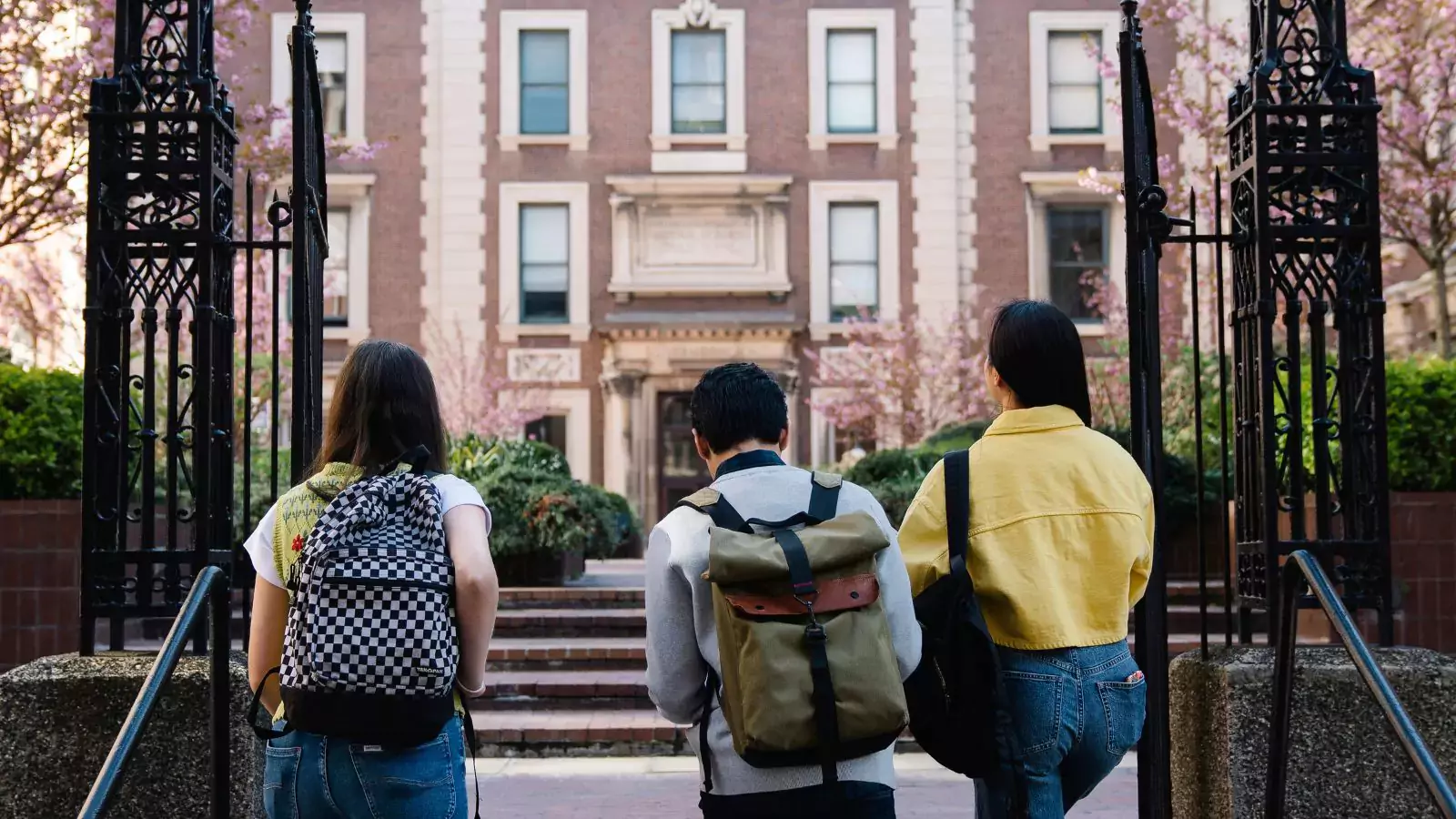The concept of student-centricity and campus life has emerged as a key theme for academic institutions all over the world in the quickly changing educational landscape of today. Campuses have changed into constantly evolving environments created to meet the varied demands of students as they look for a balance between their academic performance and personal development. This blog examines the vital components of campus life and student-centric initiatives, highlighting their function in promoting comprehensive growth and producing effective educational experiences.
Understanding Student-Centric Education

The emphasis of student-centric education is shifted from standard instruction provided by teachers to a learner-focused strategy. By emphasizing critical thinking, problem-solving techniques, and active engagement, it empowers students to take charge of their educational path. This method seeks to provide a customized learning experience that encourages motivation and engagement by giving individual interests, strengths, and goals top priority.
Key Features of Student-Centric Education
- Flexible Curriculum Design: A curriculum that is dynamic and flexible allows students to customize their educational paths and investigate a variety of subjects.
- Collaborative Learning Environments: Peer-to-peer learning, team projects, and group discussions generally encourage coordination and improve interpersonal abilities.
- Technology Integration: Interactive learning has been made possible by advanced devices and platforms, which increase accessibility and engagement in learning.
- Continuous Feedback Mechanisms: Students have the ability to determine areas for growth and monitor their progress through constant assessments and valuable feedback.
- Focus on Soft Skills: Students are better equipped to handle obstacles in the real world when communication, leadership, and emotional intelligence are prioritized.
The Essence of Campus Life
Campus life serves as a basis for social and personal growth in addition to academic achievements. It gives students the chance to find their passions, form lasting relationships with others, and grow in sense of belonging. A positive campus community is defined by variety, inclusion, and a nurturing atmosphere that promotes wellbeing.
Dimensions of Campus Life
Cultural and Artistic Engagement
Students can express their creativity and establish connections with a variety of cultures via cultural events, art exhibits, and seminars. Both cultural awareness and creative thinking are encouraged by these encounters.
Physical and Mental Wellness
Access to fitness centers, sports facilities, and mental health services guarantees a balanced and healthy way of living. In order to reduce stress and anxiety and advance general well-being, wellness programs and counselling services are essential.
Social Interaction and Networking
Social activity is facilitated via clubs, groups, and activities, which aid students in forming networks and developing their interpersonal skills. Opportunities for collaboration and career advancement often come as the result of these relationships.
Leadership and Community Service
Through volunteer work and leadership initiatives, students may develop their organizing and problem-solving abilities while also enabling them to support social concerns.
Sustainability and Environmental Initiatives
Students are urged to encourage sustainable lives via green campuses and eco-friendly practices, which develop a sense of responsibility towards the environment.
Integrating Student-Centric Principles into Campus Life
A campus life that is really focused on the needs of its students combines extracurricular activities with individualized instruction to provide a comprehensive learning experience. Institutions can implement the following strategies for achieving this integration:
1. Inclusive Decision-Making
Students develop a sense of responsibility and ownership when they participate in decision-making procedures pertaining to educational regulations and events. The administration and students may communicate more effectively through platforms like student councils and feedback forums.
2. Enhanced Learning Spaces
Traditional classrooms on campuses nowadays are being transformed into collaborative areas furnished with cutting-edge technology. Innovation hubs, open libraries, and digital labs promote academic excellence and creative research.
3. Accessible Support Services
Support services, ranging from career counselling to academic advice, have to be easily accessible. Peer support groups and mentoring programs might be established to offer more direction and encouragement.
4. Diverse Extracurricular Programs
Providing a large selection of extracurricular activities guarantees that each student will have a way to follow their interests. Sports, the arts, and technology are just a few of the numerous offerings that enhance the university experience.
5. Focus on Global Perspectives
Students are prepared for an interconnected world through study abroad programs, cultural exchanges, and international partnerships that introduce them to a variety of viewpoints from across the world.
The Role of Technology in Enhancing Campus Life
The way students communicate with campus life has been completely transformed by technology. Education has become more dynamic and inclusive due to technology breakthroughs, such as AI-powered support systems and virtual classrooms. The following are some ways that technology is influencing student-focused campuses in the future:
1. Virtual Learning Platforms
Students may access lectures, materials, and assignments from any location because to the flexibility offered by online learning environments. Especially for remote and hybrid learning models, this is advantageous.
2. Smart Campus Solutions
Campuses with Internet of Things (IoT) capabilities provide smooth service integration, from real-time resource tracking to automated attendance systems. These fixes boost productivity and raise the standard of education for all students.
3. Data-Driven Insights
Institutions can better understand student behaviour, preferences, and difficulties with the use of analytics technologies. Decision-making procedures are improved and tailored interventions are made possible by this data.
4. Digital Community Building
Students can communicate and work together more easily with the help of social networking sites and specialized applications. Even with student groups that are geographically diverse and varied, virtual communities offer a sense of community.
5. Gamification in Learning
Learning becomes more interesting and pleasant when gamification components are incorporated into the curriculum. It also rewards success and promotes healthy competition.
Challenges in Creating a Student-Centric Campus Life
Even while student-centered campus life has many advantages, institutions frequently have difficulties putting it into practice. Typical challenges include the following:
- Resource Constraints: Budget constraints could prevent the advancement of cutting-edge infrastructure and support services.
- Resistance to Change: Stakeholder response may arise when a culture shift is necessary for the transition from traditional procedures to student-centric approaches.
- Diverse Student Needs: It might be difficult to interact with a varied student body with a range of interests and backgrounds.
- Technological Barriers: It continues to be extremely essential to guarantee that all students have equal access to technology, particularly those who come from underprivileged backgrounds.
- Mental Health Stigma: Even with improved knowledge, students may be discouraged from seeking treatment due to the reputation associated with mental health disorders.
Future Trends in Student-Centric Campus Life
The future of student-centered campus life depends on ongoing innovation and adjustment to changing student requirements. A few new developments are as follows:
Hybrid Learning Models
Combining online and traditional classroom instruction offers flexibility and accommodates various learning preferences. It is anticipated that hybrid models will soon be a commonplace aspect of modern education.
AI-Powered Personalized Learning
Through its analysis of individual learning preferences and patterns, artificial intelligence makes customized educational experiences possible.
Focus on Well-Being
The integration of mindfulness exercises, resilience training, and wellness initiatives into campus life is indicative of the increased focus on mental and emotional well-being.
Global Collaboration
International partnerships and online exchange initiatives will be important in expanding the perspectives of students.
Sustainability Initiatives
Sustainability-focused curriculum and eco-friendly practices will continue to gain popularity in line with international initiatives focused on addressing climate change.
Conclusion
Campus life is required to be focused on the needs of the students in order to develop well-rounded people who can handle the challenges of modern day life. By emphasizing individualized instruction, encouraging community, and utilizing technology, educational establishments may provide vibrant settings that promote all over growth. The goal of enabling students to reach their greatest potential—academically and personally—must continue to be the major focus as campuses change. By means of constant innovation and cooperation, the goal of a campus life that is genuinely focused on students may be realized, laying down the foundation for a more optimistic and inclusive future.
Read Also – India’s 2025 Budget Breakdown: What It Means for Students & Young Professionals
Is BA LLB With Company Secretary A Good Choice





